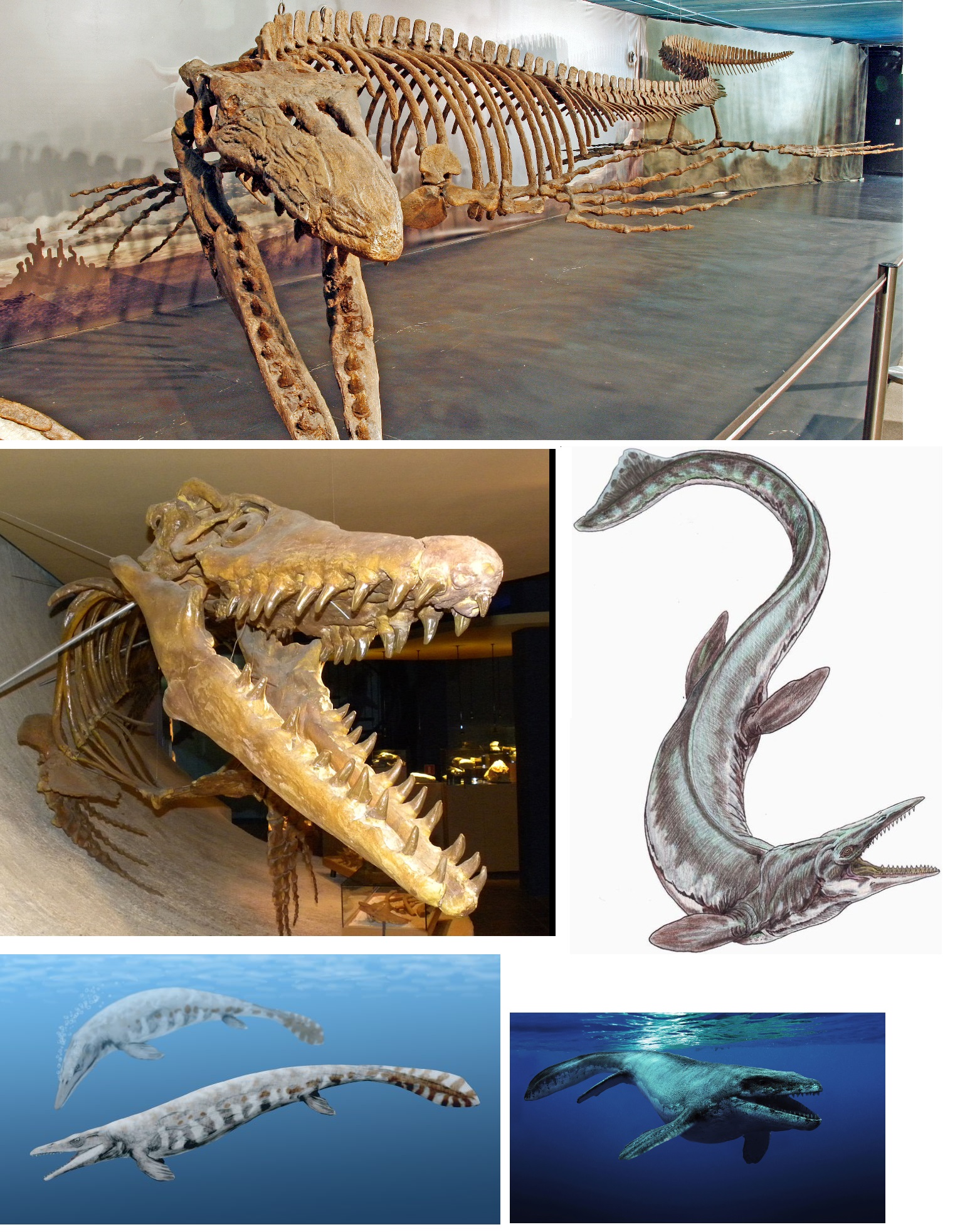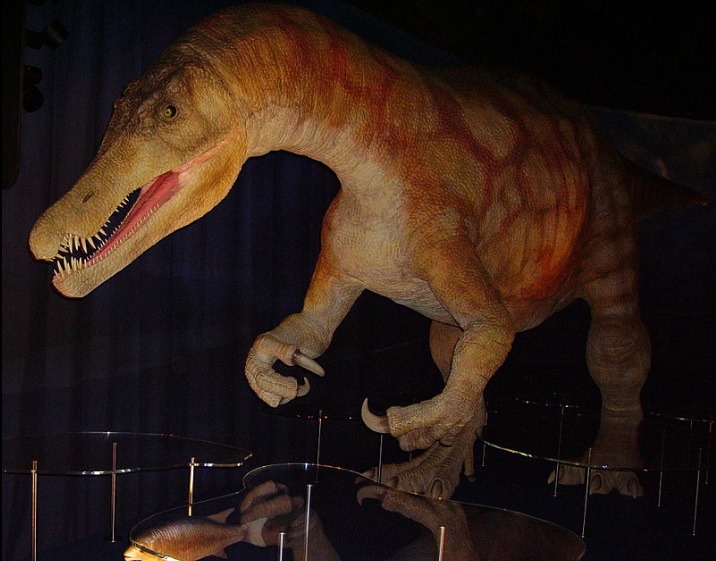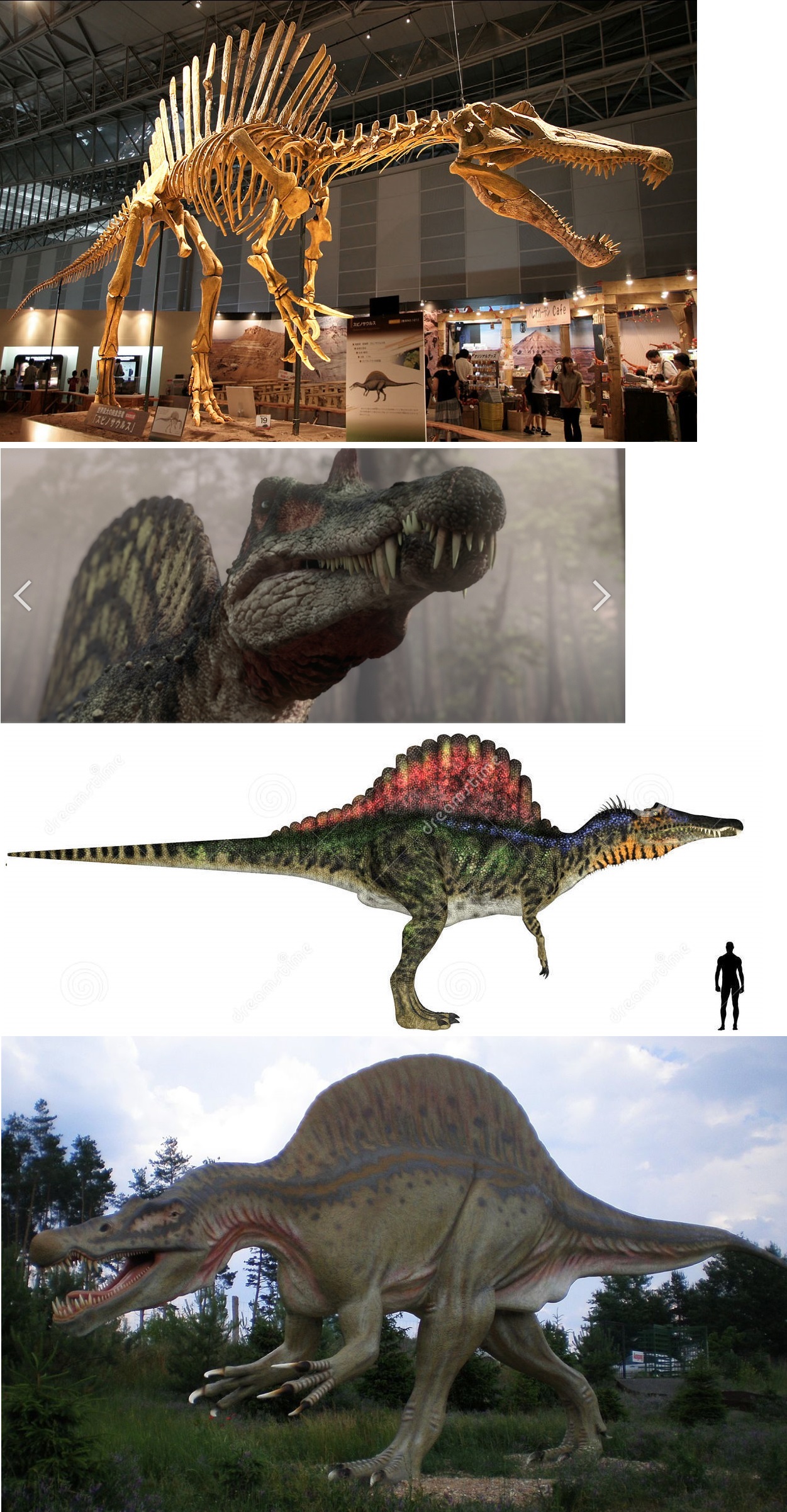
| Period: | Early Cretaceous period, at about 112 to about 95 million years ago. |
| weight: | Likey to be ranging from 7 to 9 tons. |
| Length: | Likely to be around 50 feet / 15 m. |
| Bite force: | Might even be as high as 2 or 3 tons. Different studies show large variations. |
| Further characteristics: | Powerfull longer claws (forearms). Longer, smaller snout. |
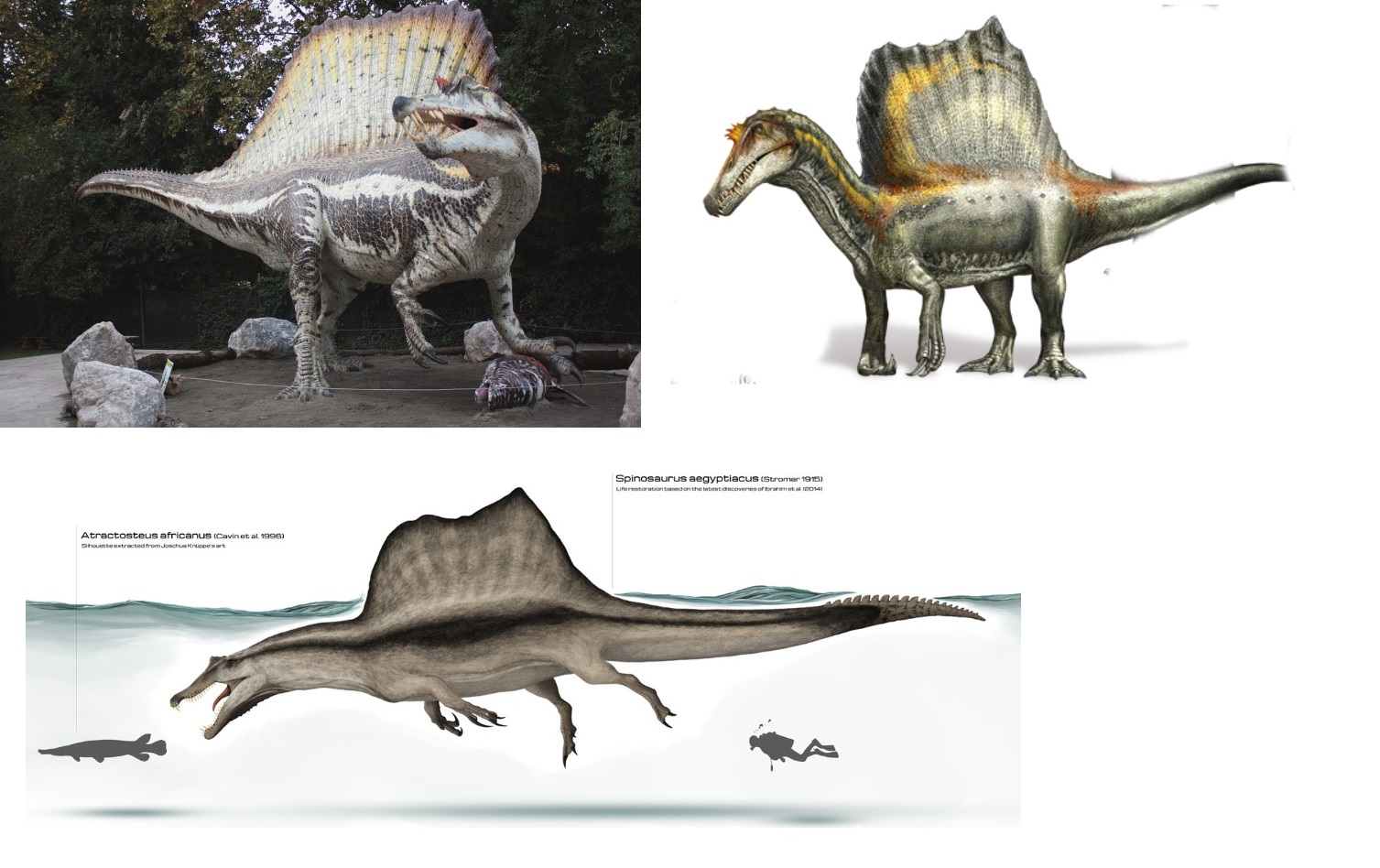
| Period: | Late Cretaceous period, at about 67 to about 65 million years ago. |
| weight: | Likey to be in the range from 6 to 8 tons. |
| Length: | Likely to be around 40 feet / 12 m. |
| Bite force: | Might even be as high as 5 to 7 tons. Different studies show large variations. |
| Further characteristics: | small claws (forearms), extremely powerfull hindlegs. Possibly warm-blooded animal, with high performance. |
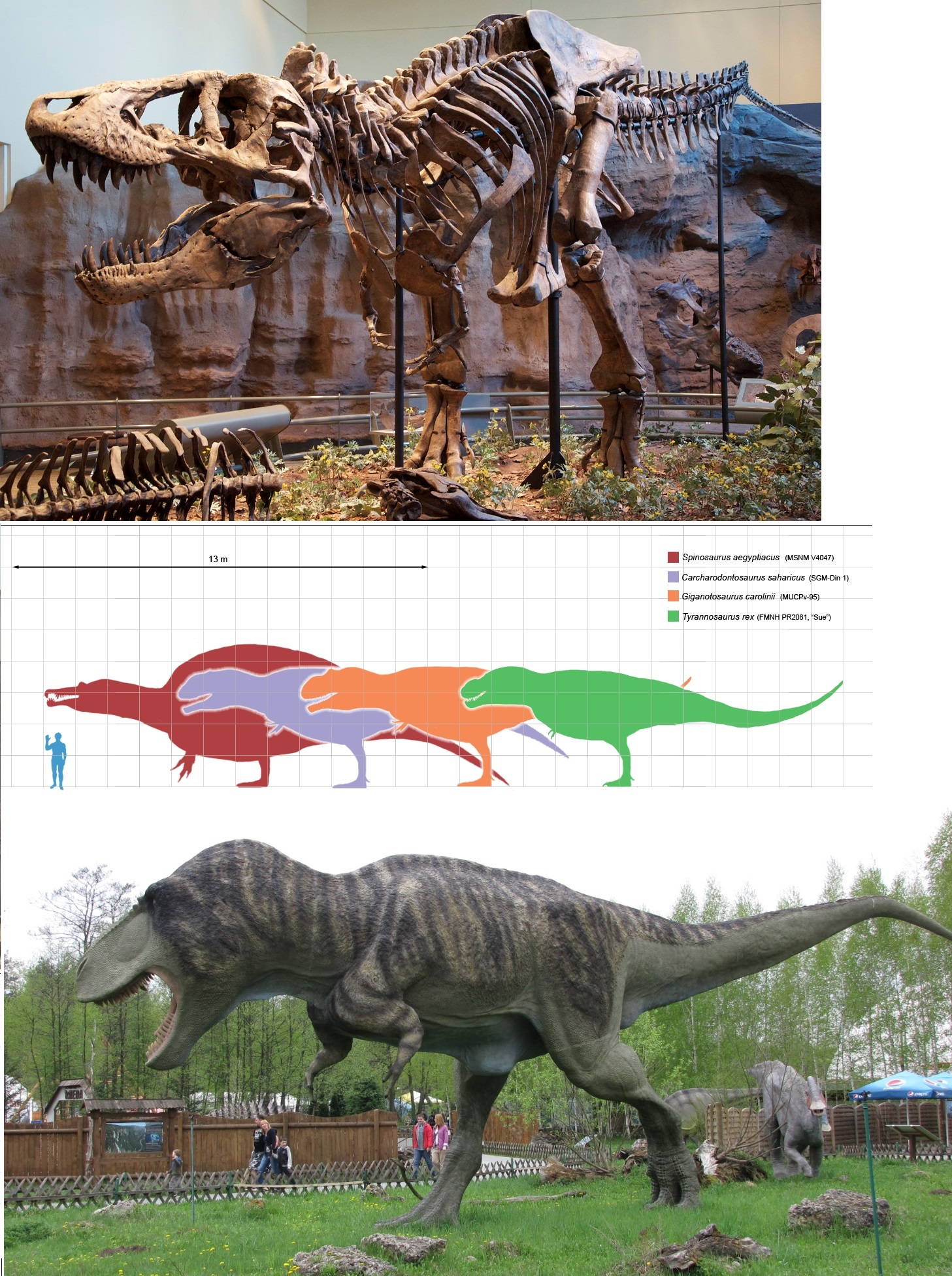
| Period: | From about 28 to about 1.5 million years ago. |
| weight: | Likey to be between 50 to 100 tons (100 tons for a 20m animal). |
| Length: | Likely to be between 14m to 20m. Different studies show quite some variations. |
| Bite force: | Likely to be somewhere in between 10 and 19 tons. Different studies show quite some variations. |
| Further characteristics: | A "White Shark-like" appearance. |
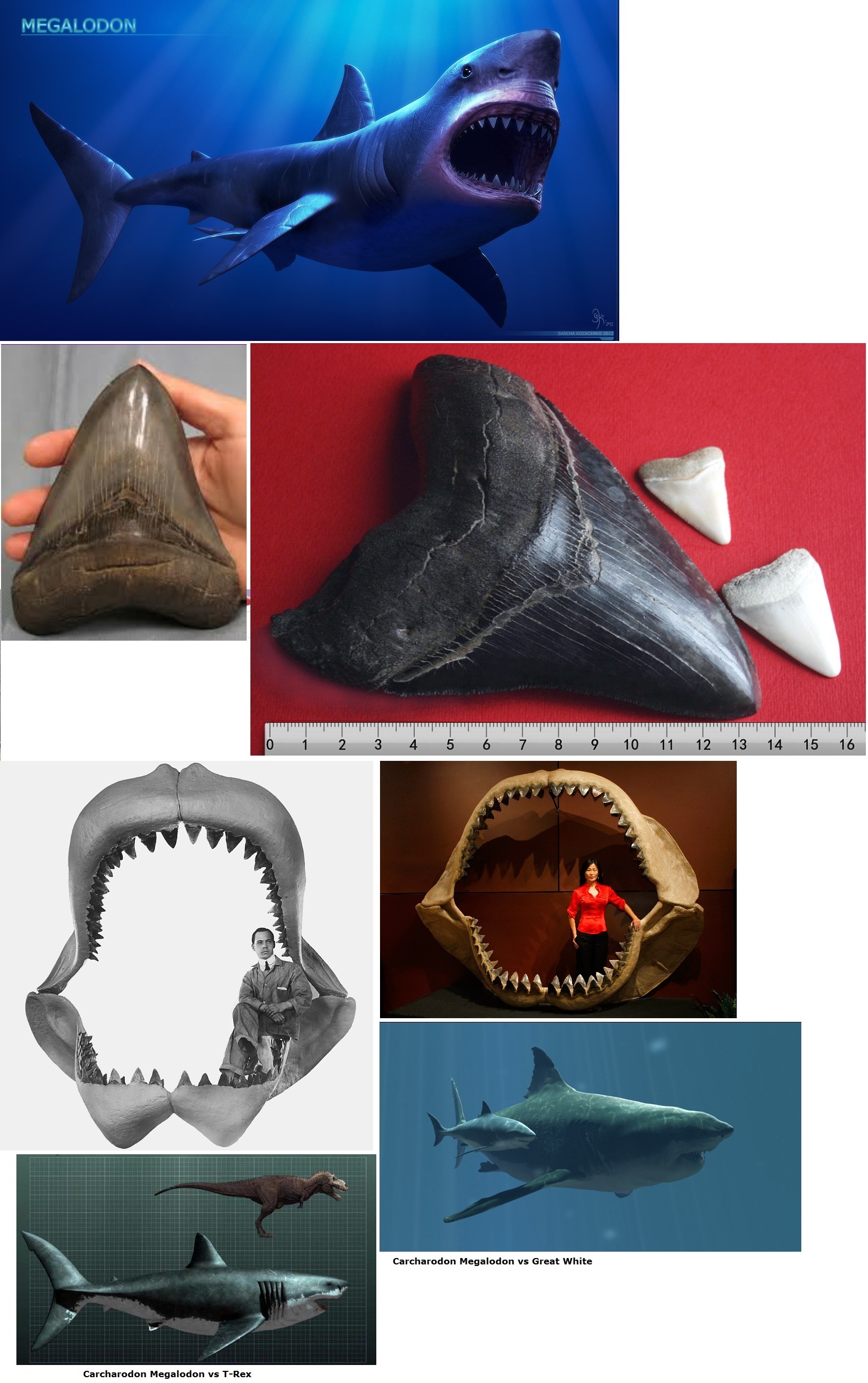
| Period: | From about 112 to about 90 millions of years ago. |
| weight: | Likey to be around 8 tons. |
| Length: | Likely to be around 11, 12 meters. |
| Bite force: | Often estimated to be around 5 to 6 tons. |
| Further characteristics: | A "crocodile-like" appearance, but not a true relative. |

| Period: | From about 80 to about 70 millions of years ago. |
| weight: | Likey to be around 8 tons. |
| Length: | Likely to be around 10, 11 meters. |
| Bite force: | Often estimated to be well over 10 tons. Different studies show quite some variations. |
| Further characteristics: | A "crocodile-like" appearance, and indeed a distant relative. |

| Period: | Estimated to have lived about 12 million years ago. |
| weight: | Likey to be in the range from 25 to 50 tons. |
| Length: | Likely to be around 50 feet / 15 m. |
| Bite force: | Have not found solid estimates. Likely to be extremely high. |
| Further characteristics: | Very large teeth in upper- and lower jaws. Physical appearance probably not unlike the Sperm whale. |

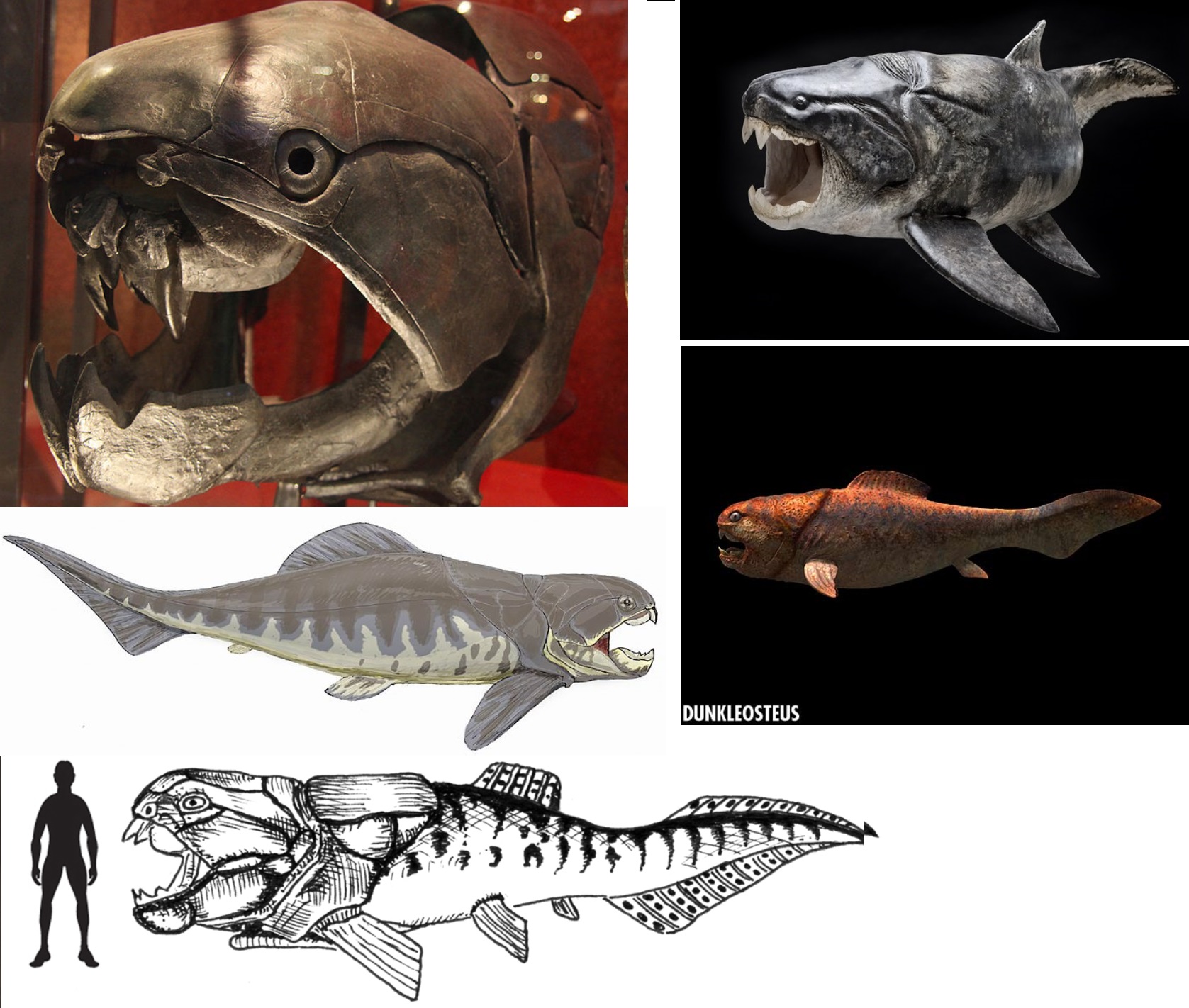
| Period: | Estimated to have lived about 380 millions of years ago. |
| weight: | Likey to be a maximum of 4 tons. |
| Length: | The maximum estimates even go up to 10 m. |
| Bite force: | Often estimated to be in the order of 2 - 4 tons. A few scientists believe that it is actually considerably higher. |
| Noteworthy remark: | Many people find the appearance of "the dunk" very frightening. |
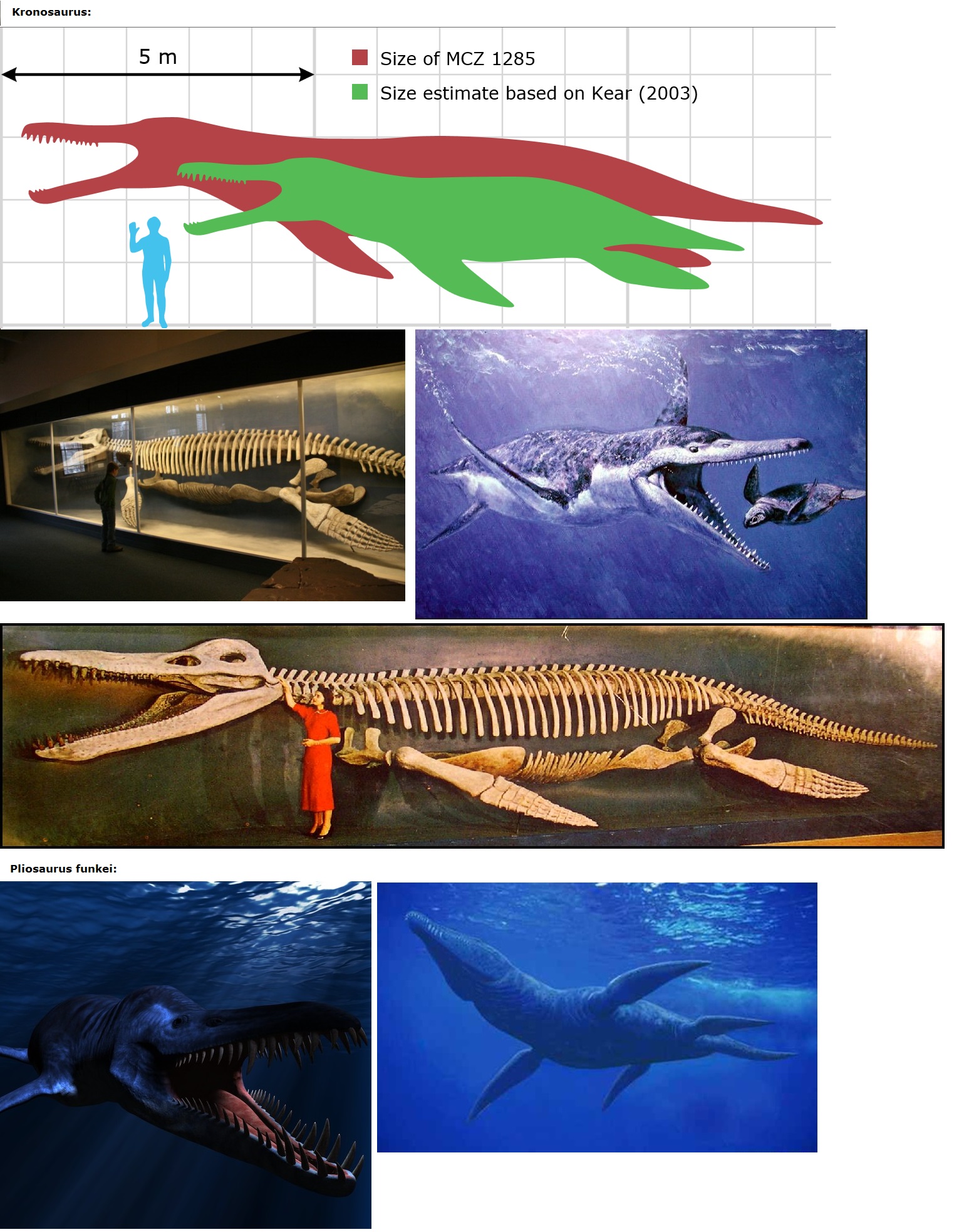
| Period: | Approximately 145 to 150 million years ago. |
| weight: | Possibly up to 10 or even 15 tons. Rather uncertain really. |
| Length: | Likely to be around 11 to 13 meters. |
| Bite force: | Very high. No true consensus seems to exists. Possibly a few times that of T-Rex. |
| Further characteristics: | The front flippers, are somewhat larger than other pliosaurs. |
| Period: | Approximately 110 million years ago. |
| weight: | Possibly up to 7 or 9 tons. Some claim that it is considerably more. |
| Length: | Likely to be around 9 to 11 meters. |
| Bite force: | Very high. No true consensus exists. Likely to be a little lower than funkei's. |
| Period: | Many say 85 to 65 million years ago. Other estimates speak of 70 to 66 million years ago |
| weight: | Possibly up to 15 tons. If the former, original estimates hold: 20 tons or somewhat higher. |
| Length: | Likely to be around 13 meters. If the former, original estimates holds: up to 17, 18 meters. |
| Bite force: | Could not find any consensus. Likely to be the same as Funkei's (see section 8) or possibly a little lower. |
